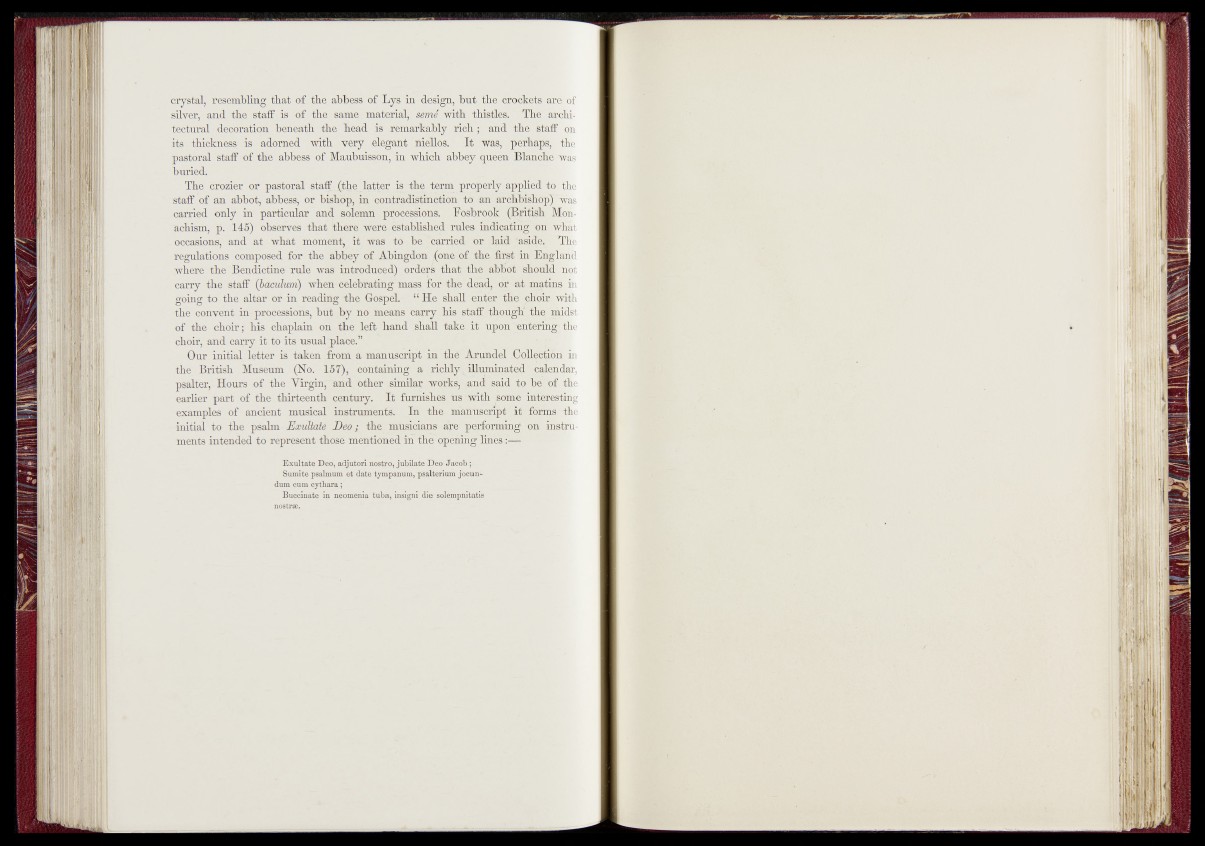
crystal, resembhngpbat of the abbess of Lys in design, butytbp I'CTOekets are. of
sjtyeiy and th,e;' staff sanie material, semé ■with, thistles. "" The architectural
decoration ^beneath !the head is -remarkably rich; and the staff on
its thickness“.is adorned with very’ niellos. was, perhaps, the
pastoral staff--of the abbess of Manbuisson, in -'wriçfrpbbje^ queen^Blariche -glas
buried;
The crozier or pastoral staff ^(the latter is~the term properly applied to n e
staff of an abbot,-abbess, or bishop, in contradistinction ’töj/an rarchbish.op) Mas
carried oülÿ in particular and solemn processions. Fosbrook (British Mon-
âchism, p. 145) observes that there were-established rules indicating öfl ■vfiat
- occasioïlSj eûd‘ at what moment^ it was to be harried? or laid' ‘aside,. gp$
regulations composed for the abbey of Abingdon ^oné^'of the first in-England
where thé Bendietine rule was introduced) orders' thaif the abbot -should rapt
carry the staff (baculim) when celebrating" masp for the dead,-' of--at matins in
going to the altar or in readittglhe Gospel.' ‘‘He shall enter'the'-phcfemth
thé convent in-processions, but by no,means carry his staffjthougbahaymnrhr,
of the choir; his chaplain ojf the left hand shall take it upori’nnteringRe
choir, and cany it tditsusuabplace:*’
Our initial letter is taken .from a manuscript .in thé- Arundel l^ljeejibn in
:the_ British Museum (No. 157), containing a ; r i ^ y villuminated^Pendar,
psalter, Honrs of the ^irginpand other similar, wofks, un<£ s&id to£^|^!fcthi!
earlier' part of the thirteenth century. It furnishes u s ^ ^ ^ ^ ^ ^H ^ p S tin g
examples of ancient musical instruments. In 4É&: n > ahuscript'^tÿ forms Baie
- initial to the psalm ^aruhate Deo ; th p musidans are %cp[)ri^ng'.,ÿfi®n&tni-
ments intended to represent those "mentioned hr^e'opfmng nnes
Exultate Deo, adjutori nostro, jubilate Deo Jacob ;
Sumite psalmum et date tympanum, psalterium jocun-
dum cum cythara ;
Buccinate in neomenia tuba, insigni die solempnitatis
nostras.